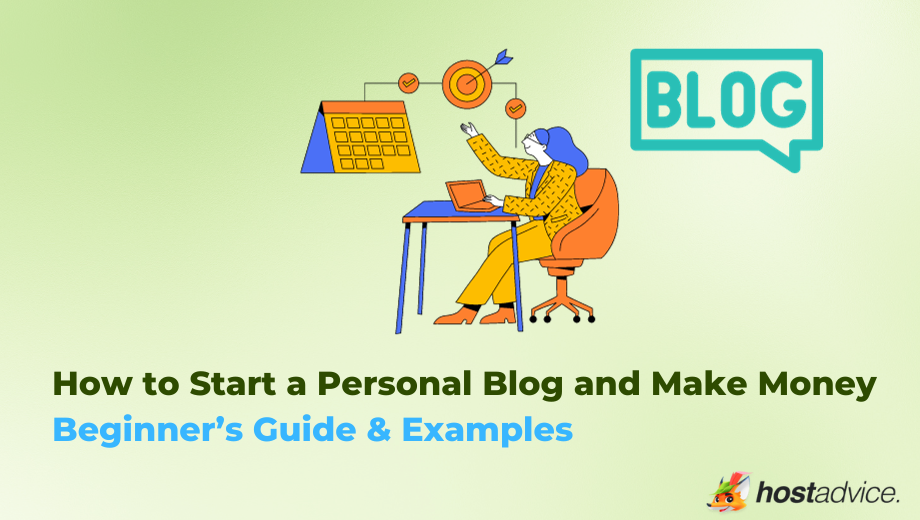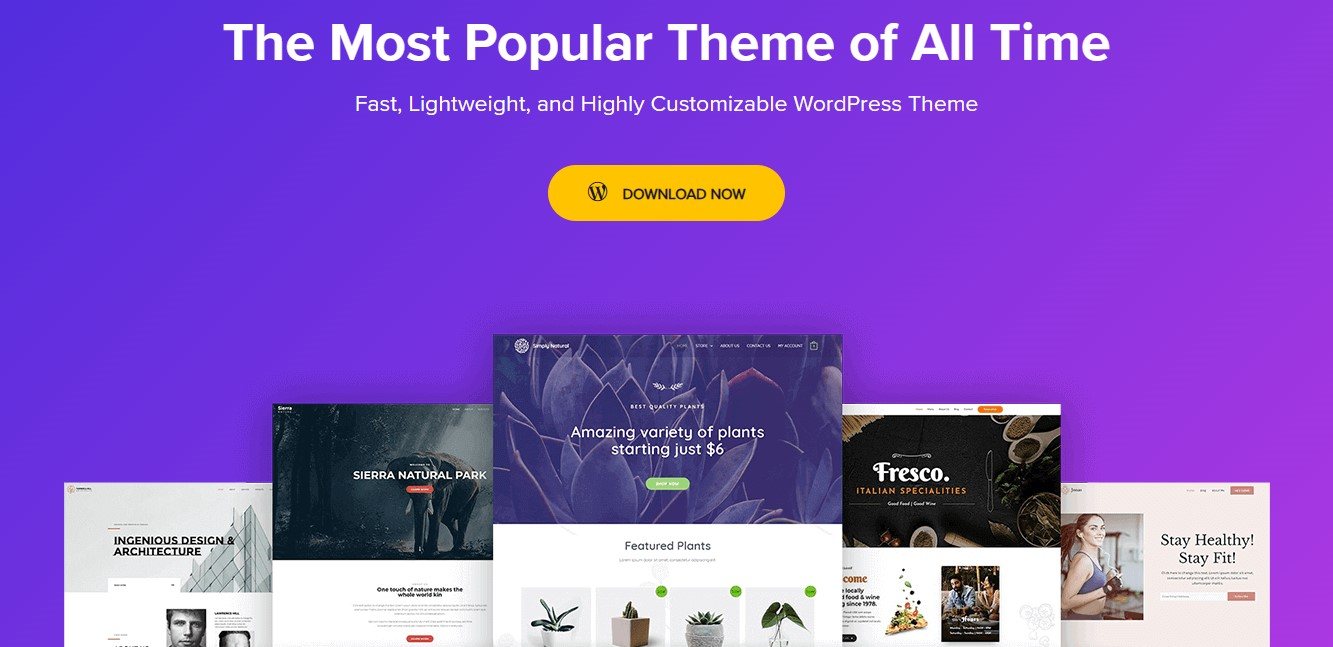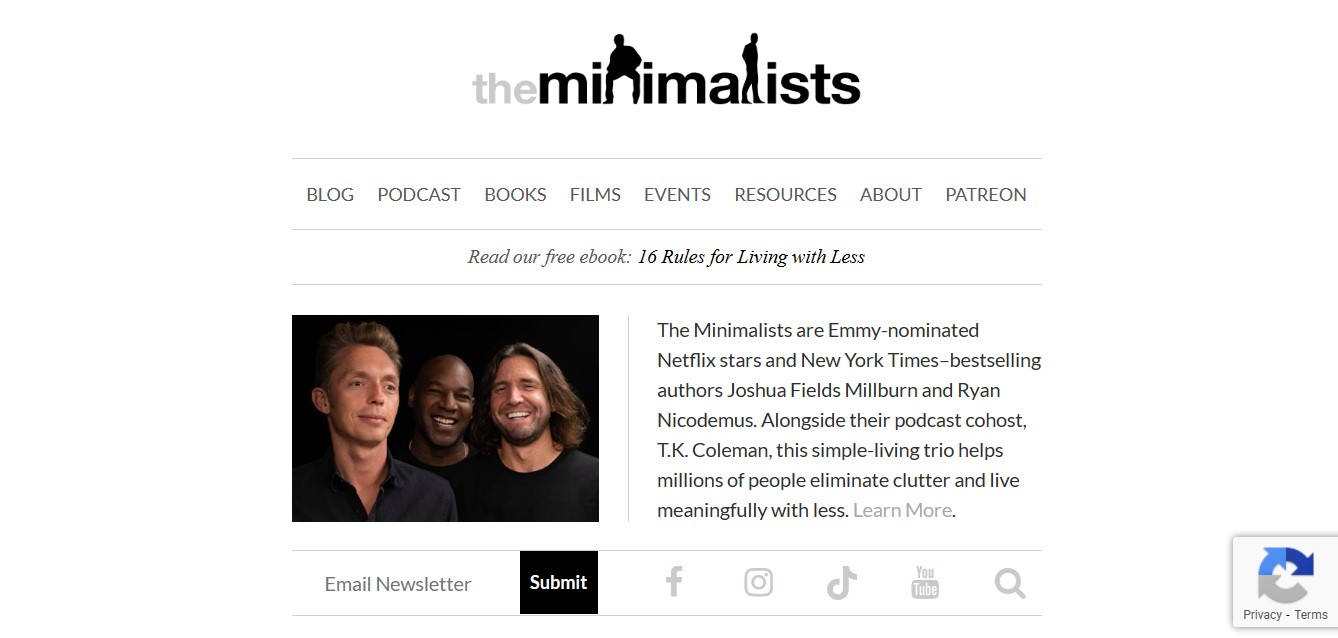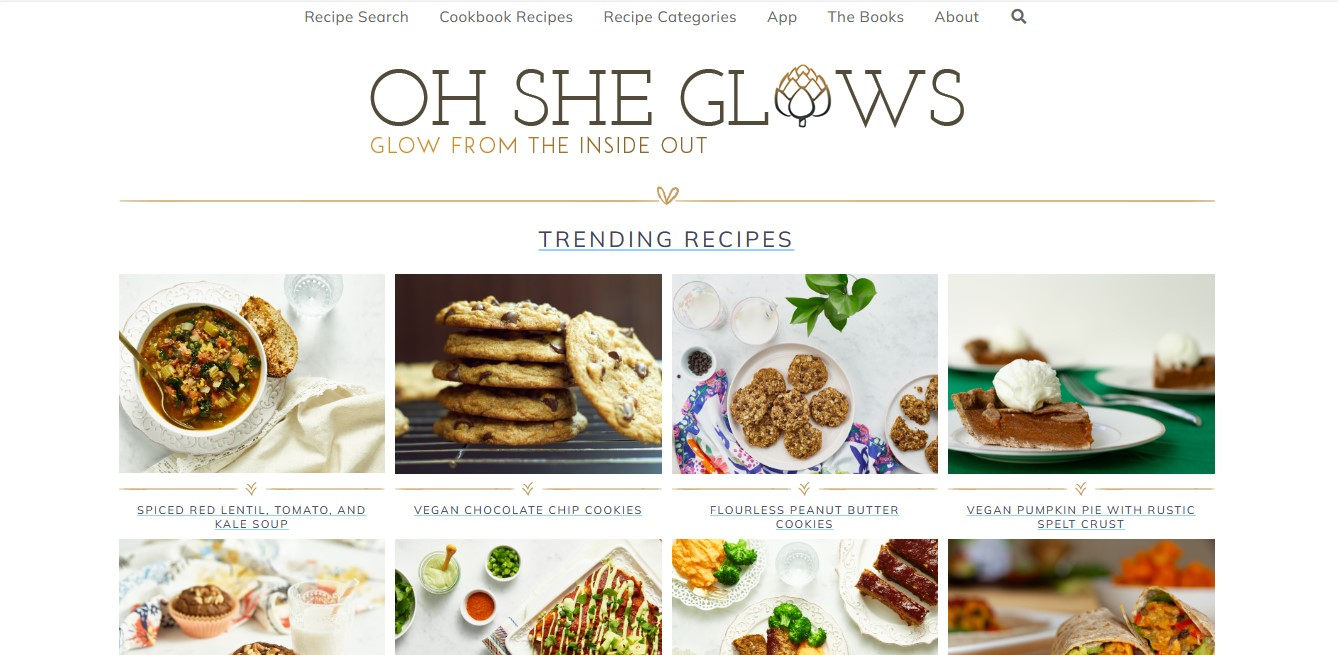
Starting a personal blog is an exciting way to express yourself and connect with others online. You can create your own space to share your thoughts and stories.
Through your blog, you can connect with people with similar interests and experiences, making it a meaningful journey of self-expression and building connections.
This article will show you how to start a personal blog and make it profitable. You’ll learn to choose a great blog theme, pick the right platform, and write posts that attract readers.
How to Start a Personal Blog as a Beginner
Let’s look at some solid action steps for starting a blog for personal use.
Step 1: Choose the Right Blog Template
Define Your Blog’s Goal
You must first decide what you want it to do. Maybe you want to share your life stories, give useful tips, or show off a skill. Knowing your goal helps you make content that fits that goal and connects with your readers.
Decide on a Layout
Think about the layout that matches your blog content and goals. For example, a clean and simple layout may suit a professional blog, while a more vibrant and creative layout might work well for a lifestyle or travel blog.
Examples of Blog Templates
Here are a few examples of popular blog templates:


These templates showcase various styles and functionalities, catering to different preferences and needs in the blogging community.
Feel free to explore and find the one that best suits your vision for your personal blog.
Step 2: Select a Blogging Platform for Your Personal Blog Site
Picking the best blogging platform is a big deal for your personal blog. In this step, we’ll help you choose a platform that suits your goals and how you prefer to create content.
How to Start a Personal Blog on Instagram
To start your blog on Instagram, follow these steps:
1. Create an Account:
- Get the Instagram app from the App Store (iPhone) or Google Play Store (Android).
- After installing, open the app, select Create New Account, and enter your email address or mobile number, then tap Next.
2. Set up Your Profile:
Add a profile picture, write a compelling bio, and include a link to your blog.
Your profile displays your bio and Instagram posts, and it’s where you can edit your profile information and adjust account settings. Simply click on your profile picture on the left to access your profile and update your settings.
3. Create Engaging Content:
Share captivating photos and use Instagram Stories to connect with your audience. Boost the visibility of your posts by including popular topic-related hashtags. This expands your reach and links you with the broader blogging community.
How to Start a Personal Blog on Facebook
Starting a blog on Facebook involves the following steps.
1. Create a Page:
Create a dedicated Facebook page for your book blog, and make sure that the page name reflects your blog’s identity.
2. Customize Your Page:
Add a profile picture and cover photo, fill out your About section, and include your blog link. Also, connect with groups related to your blog on Facebook. Join discussions, share insights, and promote your blog to reach a wider audience.
3. Share Your Content:
Start posting blog updates and photos and engage with your followers. Populate the page with different content, including book reviews, discussions, and updates. Use Facebook features like live videos and polls to engage your audience.
How to Start a Personal WordPress blog
WordPress is more than a platform; it’s where you can express yourself online and connect with others. The following steps explain how to start your personal blog using a WordPress dashboard, where creativity and meaningful connections shine.
1. Choose a Hosting Provider:
Select a reliable hosting provider like FastComet, A2 Hosting, or HostArmada.
2. Install WordPress:
Follow the hosting provider’s instructions to install WordPress on your domain.
3. Customize Your Blog:
Explore the WordPress themes, customize your site, and add essential plugins.
Step 3: Develop Your Personal Blog’s Website
You have two main choices when developing a personal blog, you can get help from professionals or try doing it yourself.
Let’s look at each option in the following table:
| Aspect | External Developer | DIY (Do It Yourself) |
| Logo | A professionally designed logo, often more polished and unique. | DIY approach might rely on online logo makers or personal skills, potentially less professional. |
| Header | Custom designed, cohesive with overall website theme. | DIY headers might be simpler, using basic design tools or templates. |
| Website Color Scheme | Professionally chosen palette to ensure visual appeal and consistency. | DIY color schemes may lack professional touch but offer a personal feel. |
| Mobile Design | Professionally optimized for various devices and screen sizes. | DIY mobile design might not be as refined, possibly impacting user experience on different devices. |
Step 4: Choose a Web Hosting Site and Purchase a Domain Name
Selecting the right web hosting company and securing an easy-to-remember domain name are crucial steps in establishing your personal blog.
Here are some practical tips:
Tips for Choosing a Domain Name:
- Be Unique: Choose a domain name that reflects your blog’s individuality. Stand out by avoiding generic or overly common terms.
- Make it Easy to Say, Type, and Spell: Select a domain name that is simple and easy to remember. Avoid tricky spellings or uncommon terms to ensure your audience can easily find you.
- Use Your Name: If personal branding is essential, consider using your name in the domain. This adds a personal touch and makes it easy for your audience to associate your blog with you.
- Check Availability: Before finalizing your domain name, check its availability. Ensure your chosen name isn’t already in use or trademarked to avoid potential legal issues.
Tips for choosing a hosting provider
- Performance and Speed: Select a hosting provider known for fast and reliable performance. Check user reviews and testimonials to assess speed.
- Customer Support: Pick a provider with excellent customer support. Responsive and helpful support is crucial during technical issues.
- User-Friendly Solutions: Choose hosting solutions that are user-friendly. An intuitive interface makes website management smoother.
- Competitive Pricing: Compare pricing plans to match your budget. Be cautious of hidden fees and consider long-term costs.
- Check Reputation: Research the hosting provider’s reputation and read reviews and ratings for insights into reliability and customer satisfaction.
Examples of Hosting Providers:
- FastComet: Known for its speed and excellent customer support.
- A2 Hosting: Offers high-performance hosting with a focus on speed and reliability.
- HostArmada: Known for its user-friendly hosting solutions and competitive pricing.
For a detailed comparison of web hosting companies and providers, refer to our Top Blog Hosting Providers page. The top providers, such as Fastcomet, A2 Hosting, and HostArmada, are recommended for their reliability, features, and customer satisfaction.
Step 5: Create a Content Calendar
A content calendar is your blog’s roadmap, providing structure and consistency. Here’s how to effectively use it:
- Plan with Tools:
- Make use of user-friendly tools like Google Calendar or Trello to organize your content. These platforms allow you to schedule post topics, set deadlines, and maintain a steady publishing rhythm.
- Scheduled Topics:
- Plan a mix of topics that align with your blog’s theme. Consider seasonal trends, audience preferences, and current events to keep your content relevant.
- Set Deadlines:
- Assign deadlines for each blog post to stay accountable. This ensures a consistent flow of content and helps you avoid last-minute rushes.
Step 6: Grow Your Email List to Share Your Blog and Make More Money
Growing your email list helps you reach more people and can help you earn more from your blog:
- Pick an Email Tool: Choose tools like Mailchimp or ConvertKit. These make it easy to keep track of your subscribers and send them emails automatically. This saves time and keeps your readers interested.
- Offer Something Special: Give your readers a free eBook, a useful guide, or tips that only they get. This makes them want to sign up and see you as an expert in what you blog about.
- Send Regular Emails: Use your email list to tell your readers about new posts, special deals, or just-for-them content. Sending emails often keeps your readers coming back to your blog.
- Tell Them About Your Products: If you’re selling something or have special deals, tell your email list about it. Your emails are a direct way to talk to people who might want to buy what you’re offering.
- Ask What They Think: Use your email list to ask your readers what they like or want to read about. This helps you make posts that they really want to see.
- See What Works and Change as Needed: Email tools usually show you how well your emails are doing. Understanding what your readers like helps you make better emails and blog posts.
Step 7: Start Writing Personal Blog Posts
Crafting engaging and authentic content forms the core of your personal blog:
- Share Personal Stories: Connect with your audience through personal anecdotes and insights.
- Showcase expertise: Set yourself up as an expert by sharing valuable knowledge and viewpoints.
- Engage with Your Audience: Foster community by encouraging comments, questions, and active participation.
- Consistent Posting Schedule: Maintain audience engagement with a reliable and regular posting schedule.
- Optimize for SEO: Make your blog easy to find in search engines. Put special words (keywords) in your posts that people often search for.
- Promote Your Content: Share your blog posts on websites like Facebook and Twitter, send them in email newsletters, and team up with others to spread your blog further.
- Monitor Analytics: Use tools to see how well your posts are doing. This tells you what your readers like and helps you make better posts.
- Stay Updated and Evolve: Always learn about new things in blogging and listen to what your readers say. Keep making changes and improvements to your blog to stay interesting and current.
Step 8: Optimize Your Blog Post Content for SEO
Boost your blog’s visibility by implementing the following basic blog SEO practices:
- Keyword Research:
- Learn the basics of search engine optimization and keyword research to identify terms relevant to your content. Use these keywords naturally within your blog posts.
- Descriptive Meta Tags:
- Create descriptive meta tags for each post, including a concise title and meta description. This helps search engines understand your content and lets readers find what they want.
- Image Optimization:
- Optimize images by compressing file sizes and using descriptive alt text. This enhances both user experience and search engine optimization.
Step 9: Get the Word Out
Promote your blog through email marketing and other social media channels:
- Email Marketing:
- Regularly send newsletter updates to your subscribers. This keeps them informed and engaged.
- Social Media Marketing:
- Share your blog posts across platforms like Instagram, Facebook, and Twitter. Leverage each platform’s strengths to maximize visibility and audience reach.
Visuals like screenshots or examples can enhance your new blog post’s overall appeal and understanding.
Why Write a Personal Blog?
Embarking on the journey of personal blogging comes with several valuable benefits:
- Connecting with Others: Personal blogs create a platform for connecting with like-minded individuals. By sharing your experiences, interests, and insights, you can foster meaningful connections and build a supportive online community.
- Sharing Your Thoughts and Ideas: Writing a personal blog allows you to express your thoughts and ideas in a creative and expressive manner. It provides a space to share your unique perspective on various topics, contributing to the diverse voices within the online space.
- Learning and Growing: Writing down your thoughts and experiences often helps you think about your life. As you blog, you learn and grow. You get better by responding to comments, learning about new things, and changing how you see the world.
- Building a Personal Brand: Your personal blog helps you build and improve your own brand online. Regularly writing real and honest posts shapes who you are on the internet. You show what you’re good at and stand out in your favorite area.
Writing a blog about what you like, learning new things, and showing who you are can be a rewarding experience in the online world.
Do Personal Bloggers Get Paid?
Yes, personal bloggers have the potential to earn money through several avenues. The amount they get paid can vary widely based on factors like niche, audience size, and monetization strategies. Here’s a quick breakdown:
1. Ad Revenue:
Many personal bloggers earn money through blog advertising. This can range from display ads to sponsored content.
According to a study by Statista, the average ad spending per user in the In-App Advertising market is projected to amount to US$59.0 in 2023.
2. Affiliate Marketing:
Bloggers often participate in affiliate marketing programs, earning a commission for promoting products or services. Affiliate marketing statistics show that the industry will grow to $14.3 Billion in 2023 globally and $15.7 Billion by 2024
3. Sponsored Content:
Companies pay bloggers to write about their products or services. How much bloggers earn depends on how many people follow their blogs and how much they engage with their readers.
According to a report by Influencer Marketing Hub, the average cost per post for micro-influencers is about $84.
4. Product Sales and Services:
Personal bloggers can make money by selling e-books, online courses or giving advice. How much they earn can change a lot.
These facts show how much money bloggers can make, but each blogger’s income differs. How well they do depends on their blog topic, how they connect with their audience, and how good they are at making money with their blog.
Which Platforms Allow You to Start a Personal Blog for Free
Many blog platforms let you start your own blog for free. This is great for people who want to begin blogging. Here are some well-known choices:
1. Medium:
Medium is a simple blogging platform that’s easy to use. It lets you share your stories and thoughts with more people. Medium has a straightforward setup and already has readers, so it’s great for those who want to write without worrying about running a website.
2. Blogger:
Blogger, owned by Google, is a free and easy blogging platform. It lets users create and publish content without any cost. Blogger offers ways to change how your blog looks and works well with other Google services. This makes it a good choice for people just starting with blogging.
3. WordPress.com:
WordPress.com offers a free hosting option with a subdomain (e.g., yourblog.wordpress.com). While it comes with some limitations compared to the self-hosted WordPress.org, it’s an excellent starting point for bloggers who want to familiarize themselves with the WordPress platform and explore the different WordPress theme options.
4. Tumblr:
Tumblr is a microblogging platform that allows users to share multimedia content in a short-form format. It’s known for its ease of use and social networking features, making it an ideal choice for bloggers who prioritize visual and specific content.
5. Wix:
Wix offers a free plan that allows users to create a website with a Wix-branded free domain name. It provides a drag-and-drop website builder, making it easy for beginners to design and customize their blogs.
6. Weebly:
Weebly is another website builder with a free plan for making blogs. It has an easy-to-use interface, templates you can change, and basic features for blogging.
Starting a personal blog on these platforms is a budget-friendly way to start blogging without spending money at first.
Each platform offers different features and strengths that suit various preferences and blogging styles.
10 Popular Blogs and Personal Blog Examples to Get You Inspired
1. The Minimalists

About: The Minimalists, created by Joshua Fields Millburn and Ryan Nicodemus, revolves around the principles of minimalist living. The blog covers decluttering, intentional living, and simplifying one’s life.
Success Factors: The blog’s success lies in its relatable content and practical advice on adopting a minimalist lifestyle. The authors share personal stories, making the blog informative and emotionally engaging.
2. Cupcakes and Cashmere

About: Cupcakes and Cashmere, founded by Emily Schuman, is a lifestyle blog covering fashion, food, and home decor. Emily shares her personal style, recipes, and tips for creating a stylish and comfortable home.
Success Factors: The blog’s success stems from its visually appealing content, cohesive brand, and Emily’s authentic voice. Combining fashion, lifestyle, and personal insights creates a well-rounded and engaging platform.
3.Wait But Why

About: Wait But Why, created by Tim Urban, explores a wide range of topics focusing on long-form content. The blog covers science, philosophy, and various aspects of human behavior.
Success Factors: Tim’s special way of writing and his clever pictures make his blog “Wait But Why†special. It’s popular because it talks about hard topics in a simple and fun way. Tim makes these topics simple and interesting, which helps readers understand them better.
4. Oh She Glows

About: Oh She Glows, by Angela Liddon, is a popular vegan food blog. Angela shares plant-based recipes, cooking tips, and her personal journey toward a healthier lifestyle.
Success Factors: â€Oh She Glows†is popular because of its nice-looking pictures and how Angela’s love for plant-based food shines through. It’s great for anyone who wants to eat healthily, not just vegans. People like it because of its good photos and healthy food ideas.
5. James Clear

About: James Clear’s successful personal blog focuses on habits, decision-making, and continuous improvement. He shares insights and research-backed strategies to help readers build better habits and make positive changes.
Success Factors: James Clear’s blog does well because he knows a lot and writes well. He offers tips that people can use. The blog is simple and clear, making it good at explaining tricky ideas.
6. Budgets Are Sexy

About: Budgets Are Sexy, founded by J. Money, is a personal finance blog with a focus on making money fun. J. Money shares personal finance tips, investment insights, and stories of financial journeys.
Success Factors: The blog does well because it talks about money in a fun and easy way. J. Money writes in a way that people can relate to, sharing his own stories. This makes different kinds of readers like the blog.
7. Brain Pickings

About: Brain Pickings, curated by Maria Popova, is a blog on various topics, like literature, philosophy, and science. Maria mixes clever opinions with quotes from famous books or articles. This makes the ideas clearer and the reading more fun.
Success Factors: The blog works because Maria thinks deeply and links different ideas. “Brain Pickings†explores books and thoughts in a way that gets you thinking. It’s a popular place for people looking for smart ideas and inspiration.
8. GaryVee

About: GaryVee is a blog by Gary Vaynerchuk that focuses on entrepreneurship, marketing, and self-improvement. Gary offers insights, tips, and motivational content to help those starting their own businesses.
Success Factors: The blog is successful because of its lively and genuine way of talking. His straightforward style, filled with useful tips and real-life stories, appeals to people looking for advice on starting and running a business.
9. Zen Habits

About: Zen Habits, created by Leo Babauta, is a blog on simplicity, mindfulness, and habits. Leo shares insights on finding simplicity in the daily chaos and creating habits for a more meaningful life.
Success Factors: The blog’s success comes from Leo’s soothing writing and focus on minimalism and being mindful. Zen Habits gives practical tips for leading a simpler and more purposeful life.
10. Seth’s Blog

About: Seth’s Blog, by Seth Godin, is a thought leadership blog covering marketing, leadership, and creativity. Seth shares daily insights, observations, and reflections on the changing landscape of business and life.
Success Factors: Seth’s blog is popular because he writes very clearly. He’s great at explaining big ideas in a few simple words, which helps people in marketing and leading others. This makes his blog useful.
Final Word: It’s Time to Start Your Own Blog
Starting your own blog begins with a single choice. You now know the basics, like picking templates and platforms.
Next, it’s your turn. Choose your blog’s topic, make it your own, and start sharing what makes you unique. Your blogging journey is waiting for you. Go ahead and dive in to tell your own story online today.
Next Steps: What Now?
1. Secure Your Own Web Identity: Explore how to get a domain name to kickstart your online presence.
2. Understanding the Basics: Understand the basics of a domain name for fundamental insights into web addresses.
3. Choosing the Right Identity: Learn about the different types of domains, their benefits, examples and how to choose one to make an informed decision.
4. Enhance Your Digital Footprint: Use premium domain names to make your blog look better online. These names can help your blog get noticed and seem more important.
5. Exploring Domain Management: Learn how to manage your domain.
Learn More About How to Start a Blog
- How to Start a Blog in a Few Simple Steps
- How to Start a Travel Blog
- How to Start a Food Blog
- How to Start a Fashion Blog: Your Guide to a Chic Online Presence
- How Much Does It Cost to Start a Blog?
- How to Start a Lifestyle Blog and Make Money
- How To Start a Sports Blog That Stands Out
- How to Start a Business Blog
- How To Start a Tech Blog: Tips and Tools You Should Know
- Tools and Tips for Finding the Best Blog Name
- How to Start a Photography Blog & How to Make It Successful
- How to Start a WordPress Blog in 7 Steps: Beginner’s Guide & Examples







